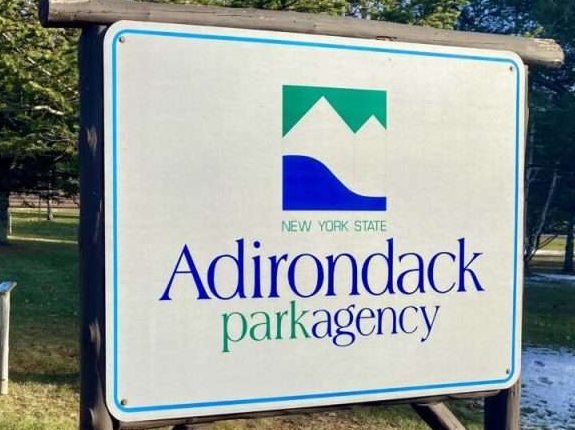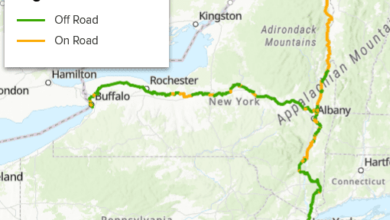Dave Gibson: More Big Picture Questions Needed at the APA


 At the Adirondack Park Agency’s September meeting, Agency member Rush Holt asked “big picture” questions which, for an Agency that spends much of its time on details, process, and staff talking points, rarely get asked.
At the Adirondack Park Agency’s September meeting, Agency member Rush Holt asked “big picture” questions which, for an Agency that spends much of its time on details, process, and staff talking points, rarely get asked.
His question concerned the amendments to the Park’s State Land Master Plan up for a final vote, and as I recall his question was, and I paraphrase him: Is the State Land Master Plan, or SLMP, working? By that he meant, are these amendments moving the SLMP in the direction of the State Constitution’s ‘forever wild’ protection of the Forest Preserve, or not?
Based on my notes, I paraphrase Mr. Holt again: given the detailed paragraphs about the SLMP we are asked to approve today, he said, ought we also to pursue more fundamental questions, such as whether the SLMP is moving closer towards its unifying theme of protection and preservation of natural resources in line with the state constitution, or are we simply treading water?
In my mind, I heard the oft-repeated dictum: if you don’t know in which direction you are headed, any route will take you there.
Holt said he did not know the answer to his question but suggested that the Agency should raise a big picture review of the SLMP “based on first principles” mandated by Article XIV, Section 1 of the NYS Constitution whereby “the lands of the state shall be forever kept as wild forest lands.”
For examples, he raised roadless areas, climate change, ecological and wilderness connectivity, and lakes under great pressure which, as the SLMP has stated for fifty years, are in need of carrying capacity measurements and assessments. “Previous promises” in the SLMP ought to be pursued, he suggested. Shouldn’t we start now, Holt asked?
Perhaps the “big picture” questions Holt raised stem from the fact that it was only his second meeting, too early in his tenure to get bogged down in details and a “go along to get along” Agency culture established long ago. I prefer to think that Mr. Holt’s big picture questions will continue and will encourage other members to pursue their own critical thinking.
APA staff responded to Holt’s questions quickly and somewhat defensively that all is well; the SLMP is a living document, and everything is working as it should, they said. Holt seemed unimpressed. He meant no disrespect but, he said, these SLMP amendments up for a vote are still being reviewed paragraph by paragraph without asking about the end goals.
His instinct, he said, was not to ask “is it working,” but to ask “to what end is it working?”
Constitutionally Neutral
As to Holt’s questioning if the SLMP amendments were moving in the direction of Article XIV, staff went on recite the SLMP: “insofar as forest preserve lands… are
concerned, the provisions of the master plan are intended to be constitutionally neutral… this master plan is not intended to make constitutional determinations regarding unresolved issues under Article XIV.”
While this language was put into the SLMP because of the lengthy list of State Lands inconsistent with Article XIV, such as state administrative headquarters in Ray Brook, it is also true that there would be no State Land Master Plan without Article XIV. The staff could have mentioned that fact and, in doing so, backed Mr. Holt up.
The Richard Booth Memo
As APA member Dick Booth wrote in a public memo issued on the day that he left the Agency (June 29 2016):
“The history of the Park, SLMP’s initial adoption in 1972, and the Master Plan’s implementation over the past four plus decades make clear that it is the underlying ‘forever wild’ protection of the vast majority of the Park’s state lands (including Wild Forest Areas) that makes the Master Plan’s land classification system both possible and important.
“The SLMP was designed to insure that large portions of the Park’s Forest Preserve would be managed in ways that were significantly more resource protective than the base line of Article XIV protection DEC had determined over many years applies to all Forest Preserve lands.”
Booth’s memo, sent to all APA members at the time and to Park stakeholders, made the historical record clear that despite Article XIV, the former Conservation Department and the new Department of Environmental Conservation (DEC, new in 1970) were allowing the Forest Preserve to become “less and less wild.”
Booth wrote:
“Any reasonable review of the Park’s Forest Preserve history makes clear that this hierarchy (Wilderness, Primitive, and Canoe areas first, Wild Forest second in terms of resource significance and protection) came into existence because in 1971 the state’s leaders decided it was necessary to alter, substantially and fundamentally, the manner in which much of the Forest Preserve had been managed up to that point…
“In 1971 the State Legislature created the Adirondack Park Agency and required it (among other things) to prepare what is now the SLMP. By that time the state’s leaders had become dissatisfied with the overall character of Forest Preserve management by the long existing NYS Conservation Department and (its successor) the very young NYS Department of Environmental Conservation, i.e., they were unhappy that over many years that department officials had chosen to allow much of the Forest Preserve to become less and less wild.
“Most critically, those officials had made numerous choices to permit ever increasing amounts of infrastructure to be constructed/installed on the Park’s
Forest Preserve lands, ever increasing amounts of motorized recreation on those lands, and ever increasing amounts of motorized access within those lands.
Booth’s Memo continued:
“The primary motivation of the state’s leaders in requiring the SLMP’s creation and then approving its classification system flowed directly from their determination that large parts of the Forest Preserve should be managed so that they would be significantly wilder than what the Conservation Department and new Department of Environmental Conservation had determined was permissible under the State Constitution’s Article XIV “Forever Wild” mandate. As a result, the concept of strongly protecting wilderness values in areas classified as Wilderness and in almost-wilderness areas classified as Primitive and Canoe became the SLMP’s central focus.
“This focus was very consistent with, and in large part inspired by, the approach taken in the federal Wilderness Act adopted by Congress and signed by the President just eight years before the SLMP was created. It is no coincidence, but rather a matter of specific and meaningful intention, that the Master Plan’s definition of ‘wilderness’ so closely parallels the definition of the same term in the federal statute.”
The APA staff work very hard every week, but they and other APA members this month should have been more receptive to Member Holt’s questions than they appeared and, perhaps, more knowledgeable about the SLMP’s history in order to address his questions.
It seems clear from history and from Dick Booth’s memo (Booth having worked for the APA staff in the early 1970s, studied the APA regional land use plans for decades since, and served on the APA from 2008-2016) that in signing the State Land Master Plan in 1972 Governor Nelson Rockefeller was acknowledging two facts:
1. The SLMP would not exist without Article XIV, and;
2. The SLMP was created and placed into executive law to strengthen protection of the Forest Preserve – since in far too many cases the Conservation Department, then DEC, were trivializing and undermining the intent of Article XIV and allowing the preserve to become less wild.
2021 Court of Appeals Ruling
For recent evidence of point 2, witness the 2021 ruling of the NYS Court of Appeals against the DEC and APA for their unconstitutional authorization and construction of wider, flatter, straighter community connector snowmobile trails.
Rush Holt’s September questions elevate the Agency and its basic purpose to insure optimum overall conservation, protection, preservation, development and use of the unique scenic, aesthetic, wildlife, recreational, open space, historic, ecological and natural resources of the Adirondack Park.
May the questions continue and spread to other members.
(Richard Booth’s entire memo titled “State Land Master Plan Classifications Of Large-Acreage Forest Preserve Acquisitions Where Special Resource Values Exist and Potential Classification of The Boreas Ponds Tract” is located here.)
Source link




